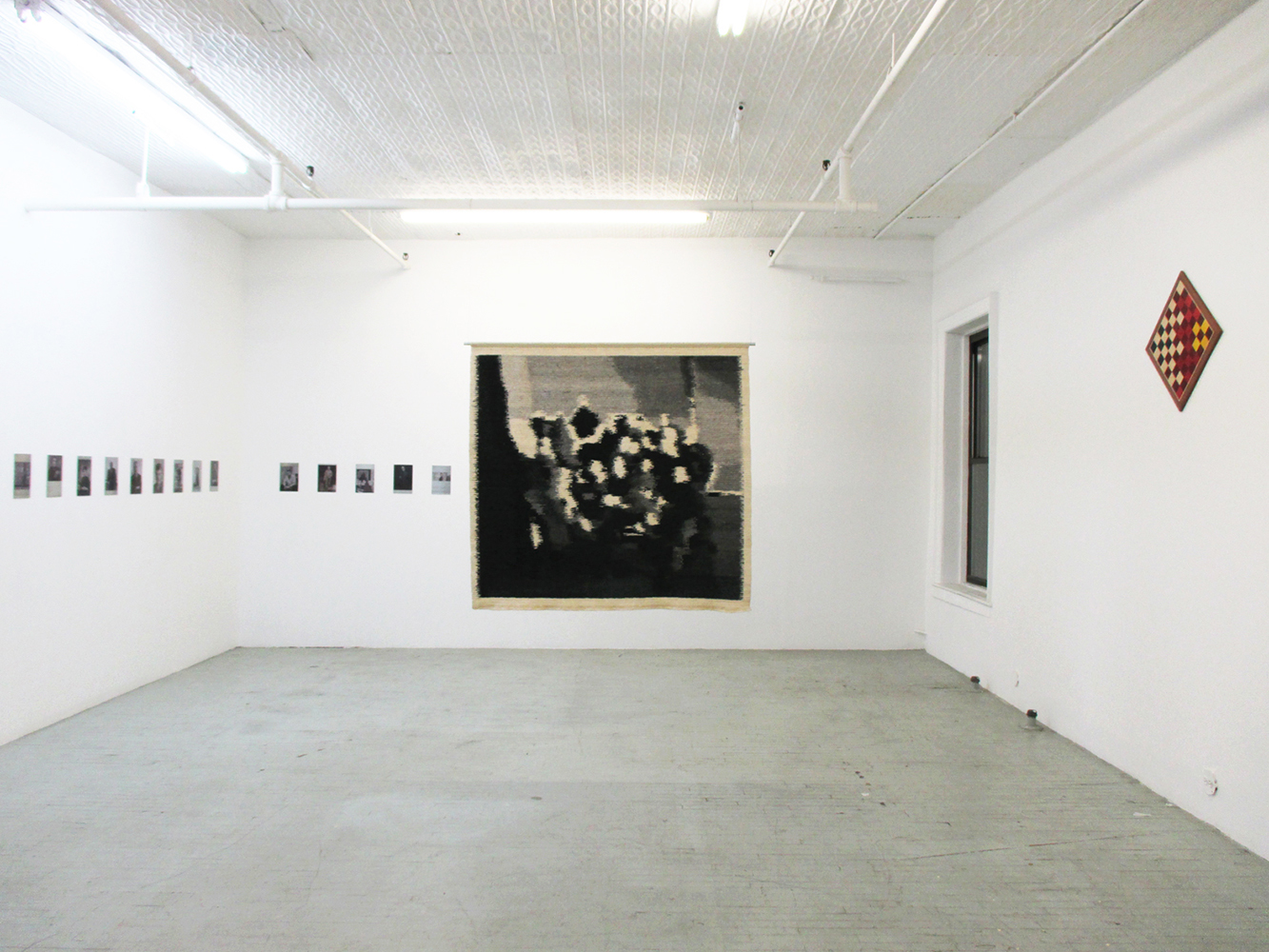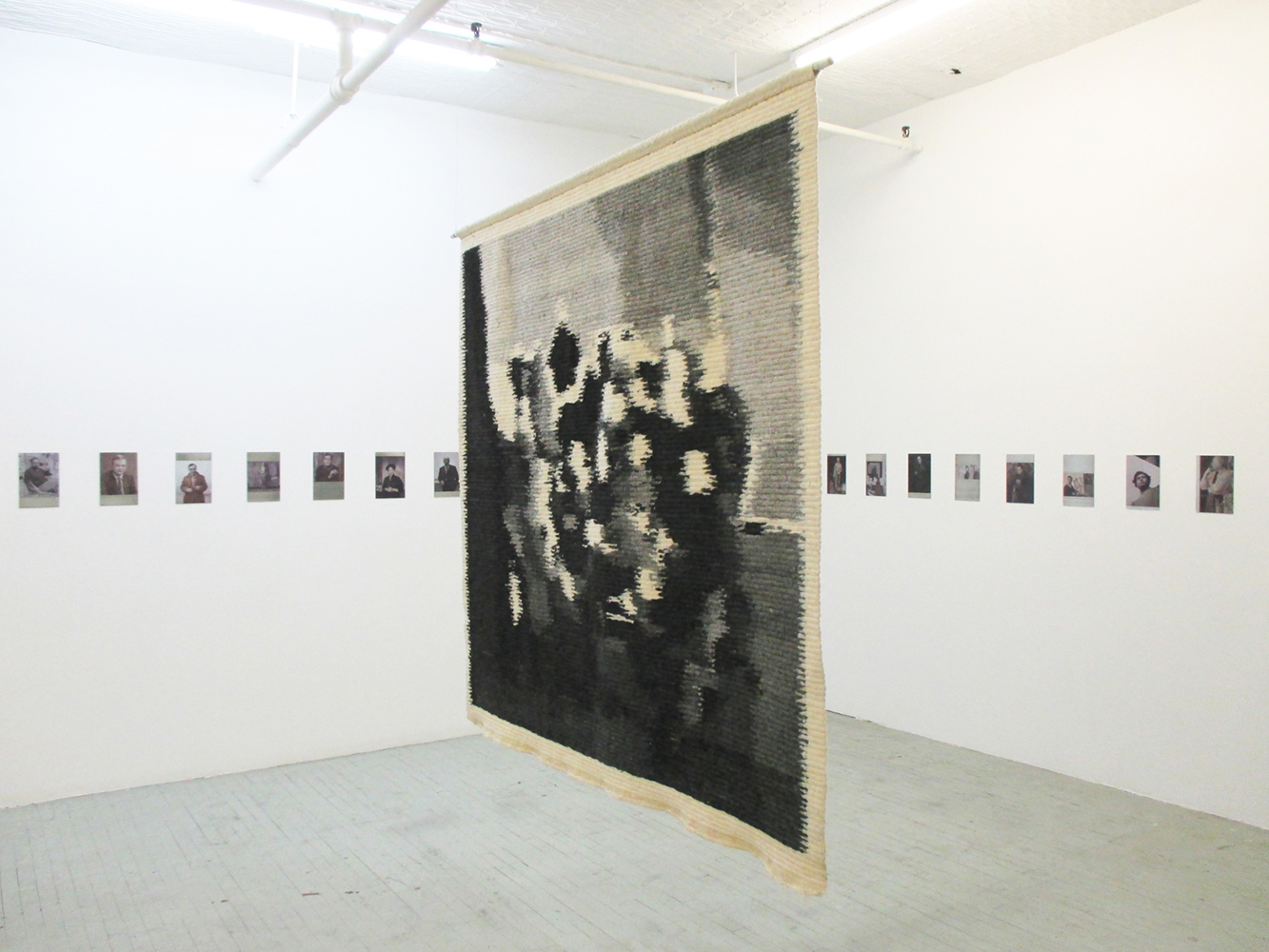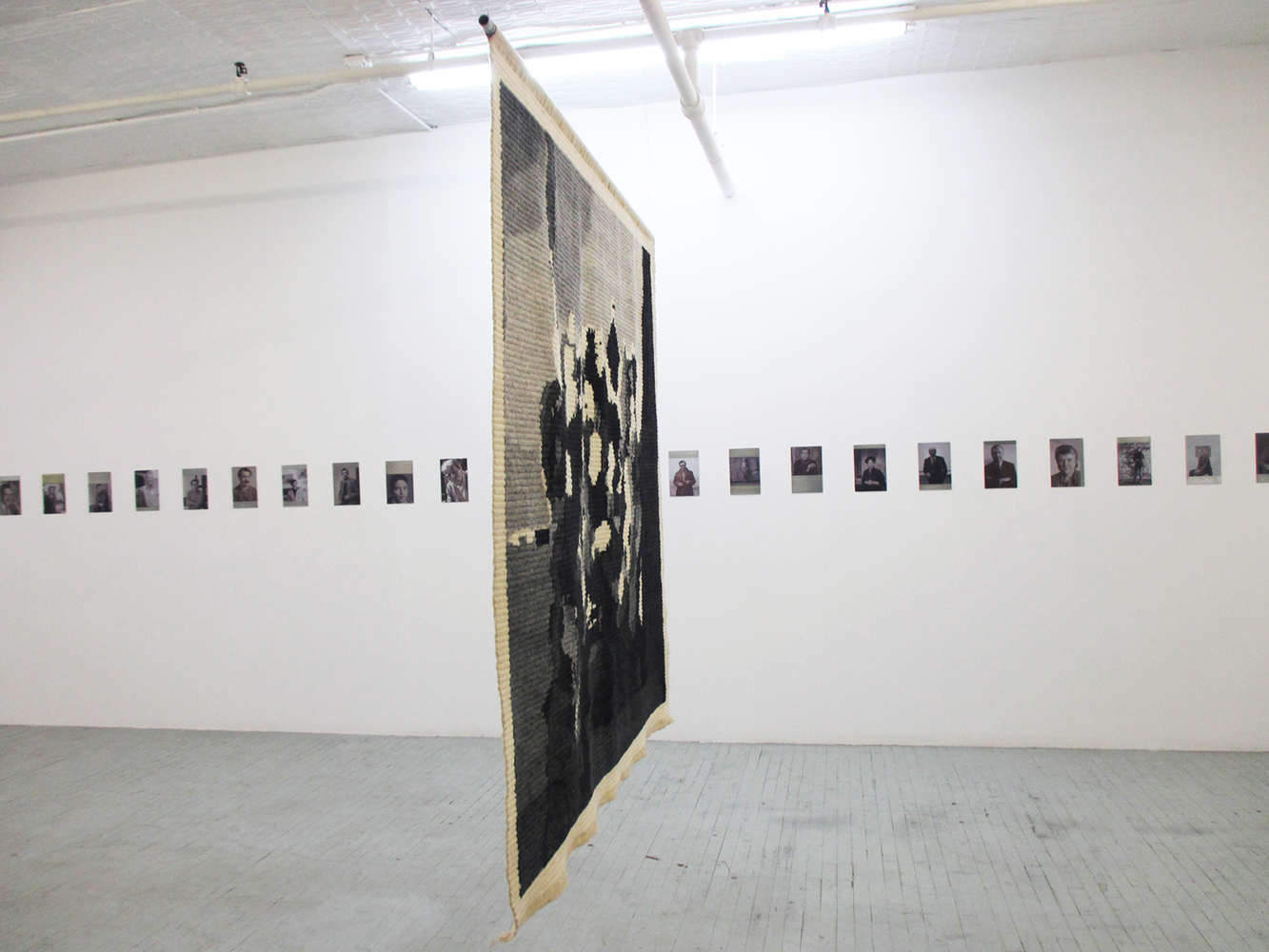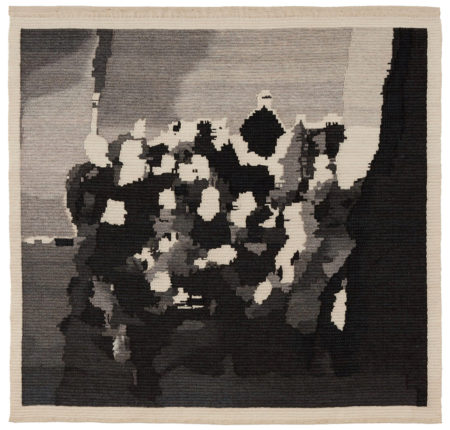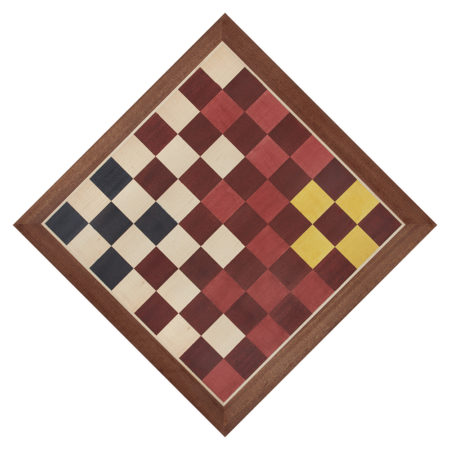Miguel Aguirre
New York School
The project is composed of a series of thirty-two oil on zinc portraits and three abstract works, each made in a different medium: a tapestry, a chessboard intervention, and a mural painting. All these works are part of his recent explorations on American Art History, especially the American abstraction that became one of the first movements that gained international recognition and gave visibility to New York as the world capital of art since the 1940´s. The portraits feature first and second generation artists that are known to be associated with American Abstract Expressionism.
For the thirty-two portraits, Aguirre appropriates black and white photos of the painters found on the Internet and reproduces them on same-sized zinc sheets. The portraits depict a handful of well-known figures of the movement, while a majority of the artists may relatively be unknown to the general public. More than just an homage, this series tends to be a sort of critical analysis on the history of this movement and its formal achievements. By experiencing all of these portraits together, one has the sensation of being in front of a yearbook of sorts, which allows us to make some deductions of this class of artists, such as the fact that half of them were smokers, most of them are men, most of them are white, etc. However, a deeper analysis of all these figures you begin to understand that just a few of the artists in New York School were born in this state, and that most of them come from other states of the Union, or from Canada and Europe, following the tradition of diffusion that has characterized the development of culture in this city.
In conjunction with this figurative series, Aguirre has also developed three works, “exercises,” taking into account some principles of Abstraction and combined them with one of the richest cultural heritages of his country of origin: the textile art of Peru. The first exercise uses a famous photo taken by Nina Leen of several abstract expressionists (published in Life Magazine in 1951), to which the artist has applied the “Palette Knife” filter of Photoshop to obtain his abstracted forms. The resulting image was then used as a blueprint by a Peruvian textile artisan to create a quilt with sheep wool using the millennial technique of the San Pedro de Cajas town in the province of Junín.
The second exercise is a chessboard made out of wood and painted with watercolor. This work takes its departure from the book Who Paid the Piper? The CIA and the Cultural ColdWar, written by Frances Stonor Saunders and published in 1999. In it, one reads that the CIA, more apparent in the 50’s, used different institutions such as MoMA to promote the American Abstraction by developing shows of these artists in different European museums with the purpose to fight the totalitarian ideals of the Soviets and their satellites pre-dating the era of the Iron Curtain. The chessboard is painted in the colors of the American and USSR flags whose resulting abstraction closely resembles the abstract patterns of the Nazca (a pre-Colombian culture from the central coast of Peru) in some of their textiles.
Aguirre’s last exercise is an intervention in one of the walls at the gallery, which refers to some of the painters in his New York School who have participated in the Federal Art Project, organized by the Roosevelt office for the creation of hundreds of murals in public buildings. Produced from Roosevelt’s intention, the intervention echoes Peruvian quilts of the 19th Century while it also citing Barnett Newman´s zips[1].
[1] Stylized vertical lines that Newman uses in his painting vocabulary to separate areas of color.
